Dutch Oven Baking
Friday March 15, 2024
Lent is bread season.
I’ve been experimenting with bread recipes for a while now. It’s fun to just throw ideas at the wall and see what happens. Even when the result isn’t good, it’s usually at least edible and better than any bread shaped object at the supermarket. But as much fun as trial and error is, you get a higher success rate with your experiments when you have some idea what you’re doing. I did some research on how to develop my own bread recipes and found Ken Forkish’s book “Flour Water Salt Yeast”.
He uses just those four ingredients to create a number of wildly different breads. The simplicity of the recipes highlights how simple changes in process and timing can make a big difference in the final product. When I first started baking I thought it was just about mixing the ingredients together and throwing it in the oven. I’ve realized within the last year though, while flour may be the base, yeast and bacteria are really the stars of the show. A good loaf primarily results from encouraging cultures to ferment in the way you want, the ingredients are just a support role.
All of the loaves in the book are baked in a dutch oven which steams the dough creating the hard crust of a commercial bakery in your home oven. Last year I tried baking baguettes and “steamed” them with a pan full of boiling water in the oven. While not completely useless, the effect is minor in comparison to the dutch oven. The majority of the steam escapes out of the oven’s venting and the (very annoying) process of dumping water into hot oven drops the temperature a significant amount.
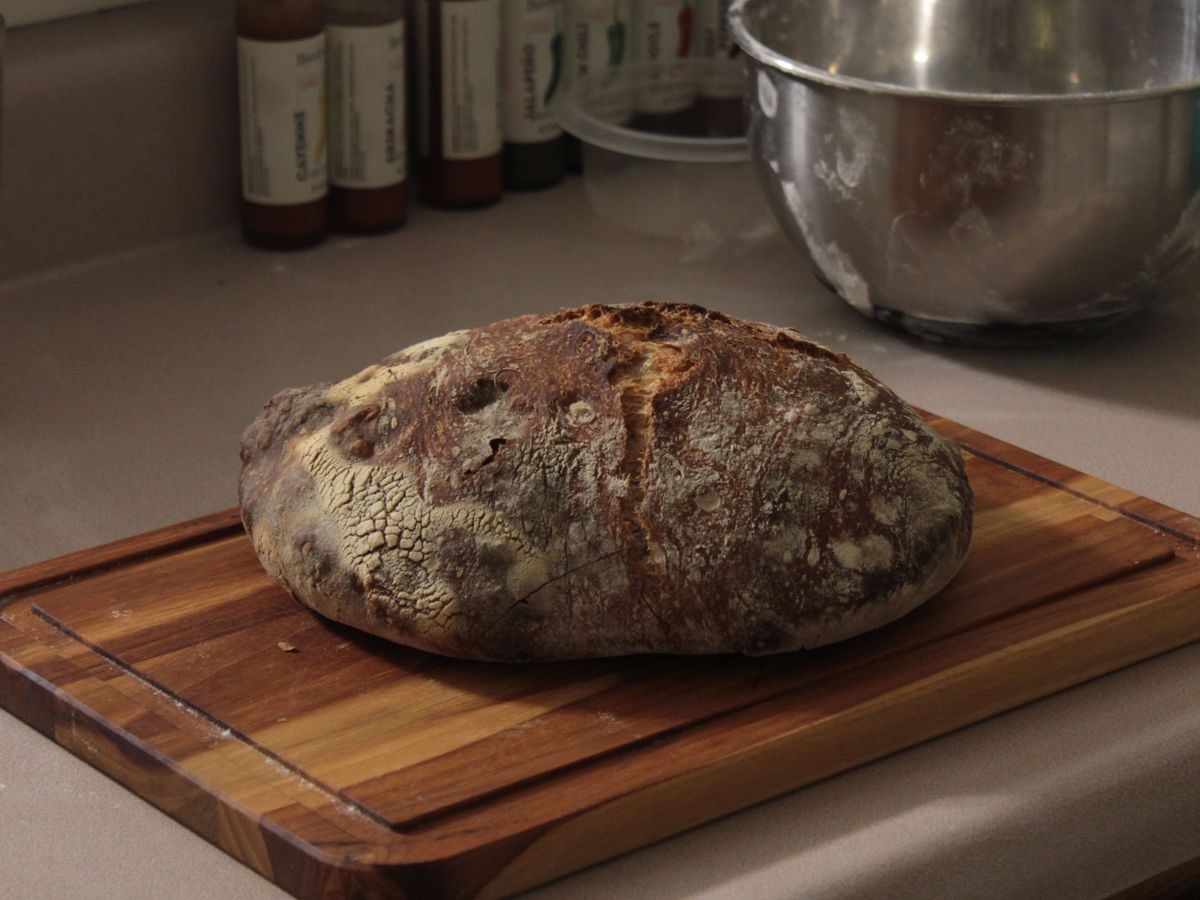
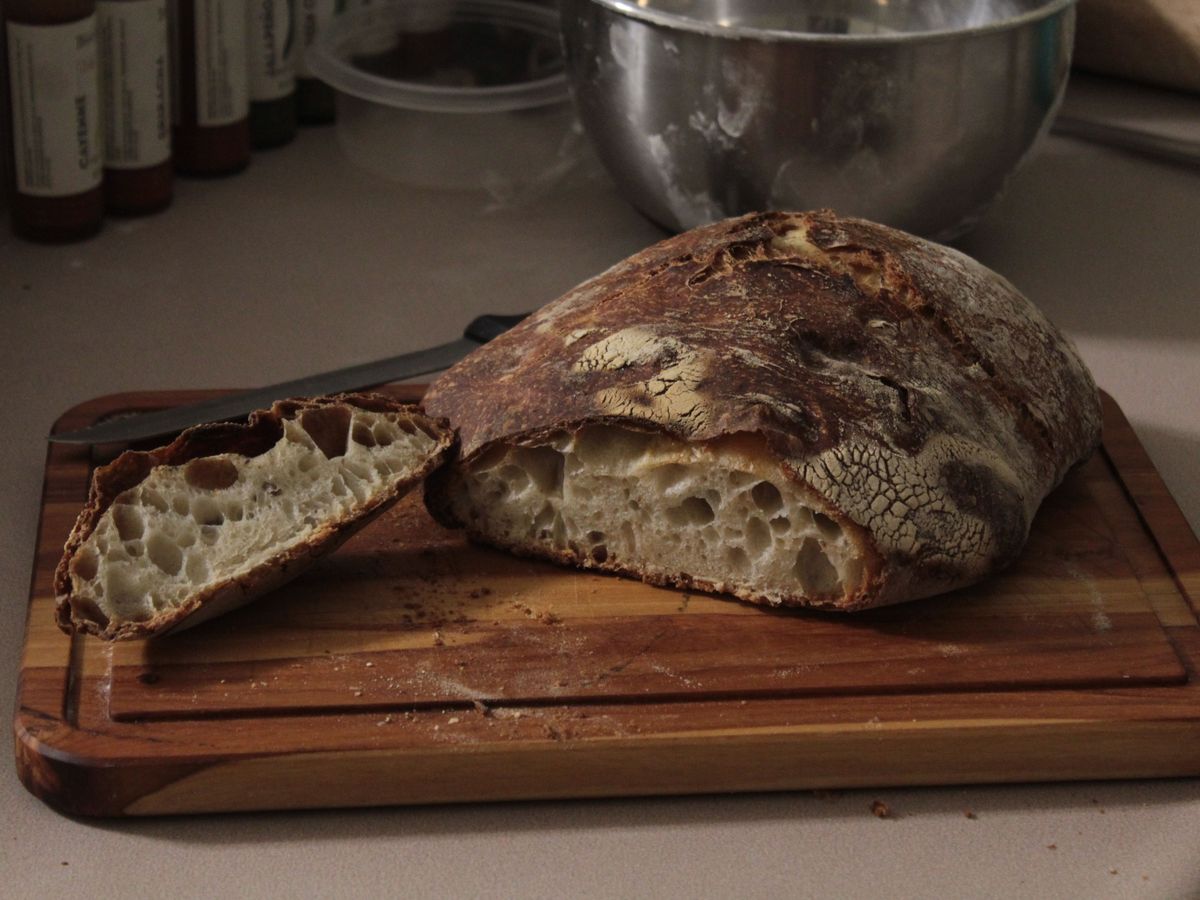
This first loaf came out a bit flat. It was supposed to be the weeknight version of his Overnight White Bread. I don’t think I folded the dough enough and I know I shaped the loaf poorly. It had a pretty mild flavor but, as all homemade loaves, was miles better than any store-bought loaf.
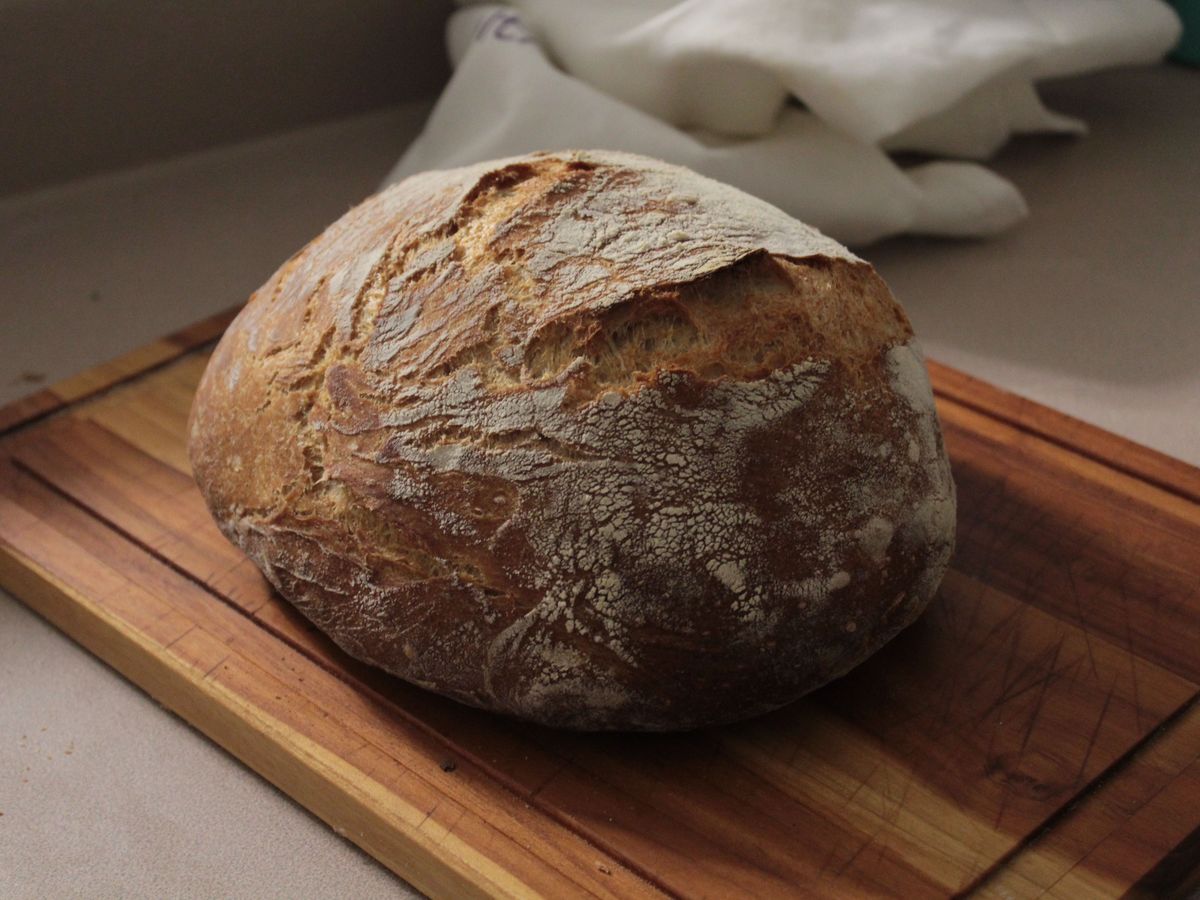
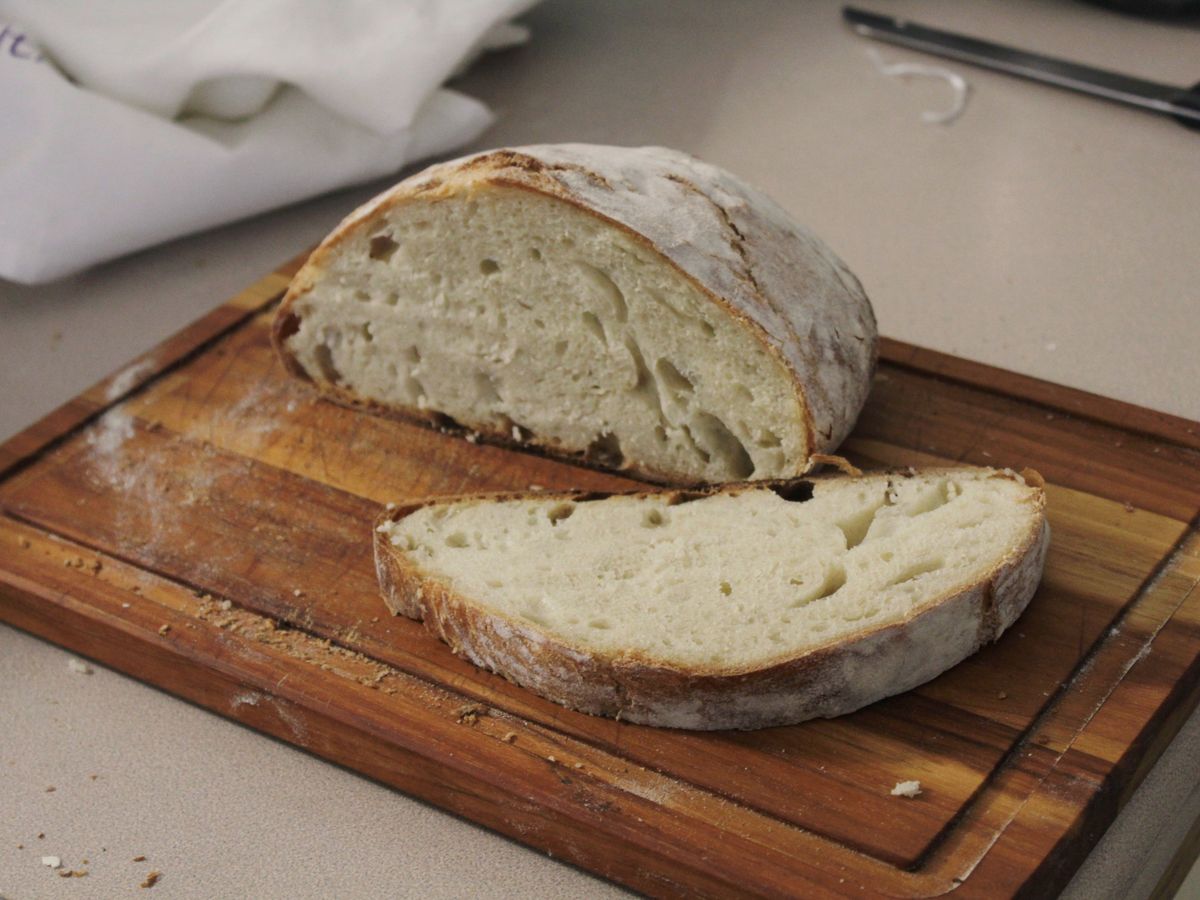
My second bread, White Bread with Poolish, had much more oven spring to it than the first one. Ken’s videos on mixing and shaping helped with that. I could tell the properly shaped dough ball was tighter than my first one. I made the poolish for this at 5:30am Thursday, mixed the dough at 8:00 pm, and did three folds over the course of an hour and a half. From there I departed from the book’s schedule and finished the rise in the refrigerator over night. 4:00 am I took the dough out and shaped it, letting it proof until 5:00 am and baked for about 50 minutes.
As you can probably tell from the photos it’s not quite as dark of a crust as the first dough. That last ten minutes in the oven really finishes off the crust, adding a good deal of complexity to the flavor, which I’ll keep in mind in next time I make it. Luckily the flavor of this dough was good enough to make up for the 8/10 crust. It had a very buttery taste, which reminded me a bit of brie, and just a hint of sweetness in the crust. This was definitely the best loaf I’ve ever baked. I shared it with some friends and it was gone in one day.
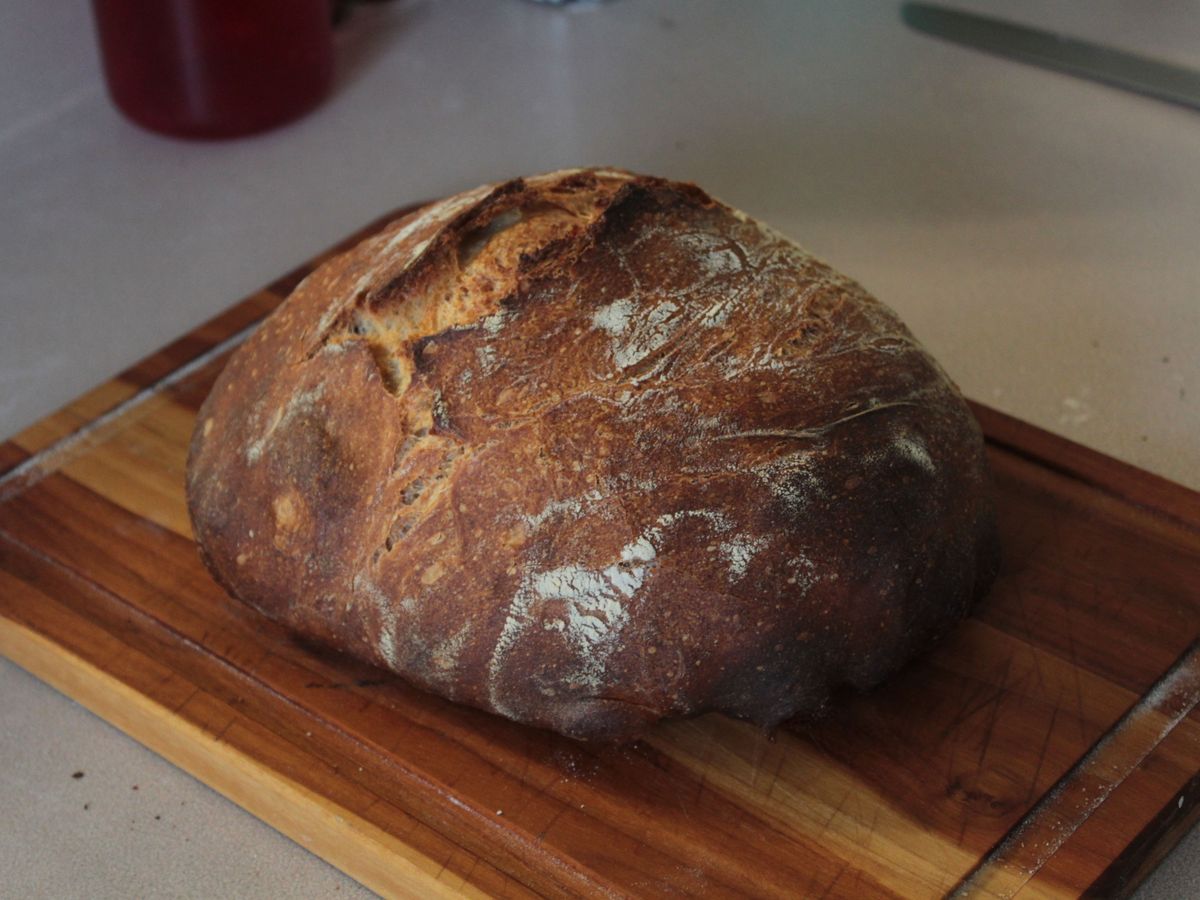
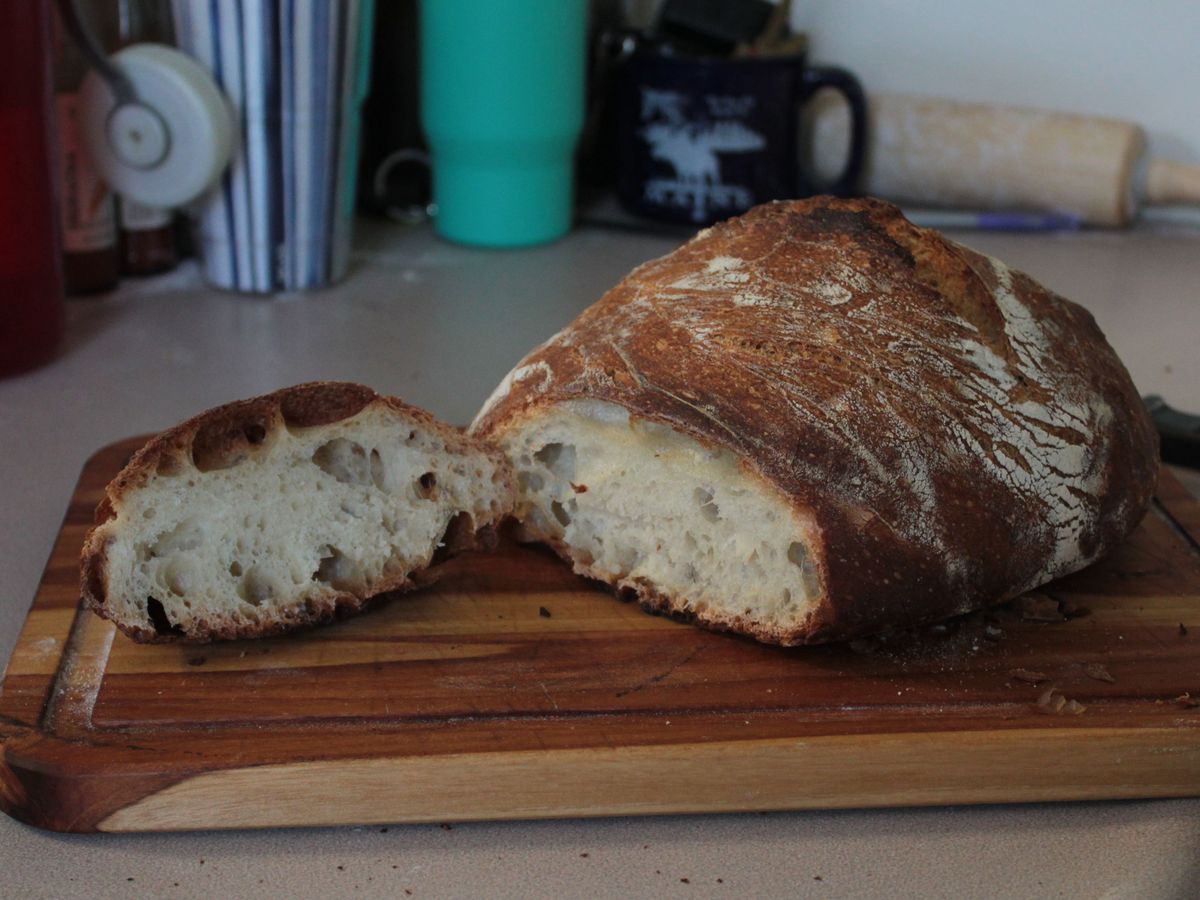
This third bread is the White Bread with 80% Biga. A biga is like a poolish but stiffer which alters the type of cultures that will develop. A poolish uses 50/50 flour/water whereas the biga is about 60/40.
I think I should have let this one pre-ferment a little longer because I didn’t get quite as much flavor as with the poolish. I left it about 14 hours as per the recipe but my kitchen runs cold (about 65) and in hindsight I think I left the bowl next to a window. Overall it was still a good bread, though. The full 60 minutes gave it a nice dark crust which added a lot to the somewhat lacking undeveloped ferment. This bread had a grainy aftertaste that reminded me a bit of Cheerios. Next time I do this I’ll let the biga run a few hours extra to make sure I get all those nice pre-ferment flavors going. I think doing a long bulk ferment in the refrigerator also helped my poolish bread develop more flavor.
Update:
I bought a second dutch oven to bake two loaves simultaneously and was surprised by the result. The loaf on the left was baked in my old dutch oven (not sure what brand it is). The loaf on the right was baked in a new Lodge dutch oven. Both are cast iron, but there is a noticeable difference in the amount of heat they retain. These loaves are from one batch of dough. They were put into and taken out of the oven about 15 seconds apart.
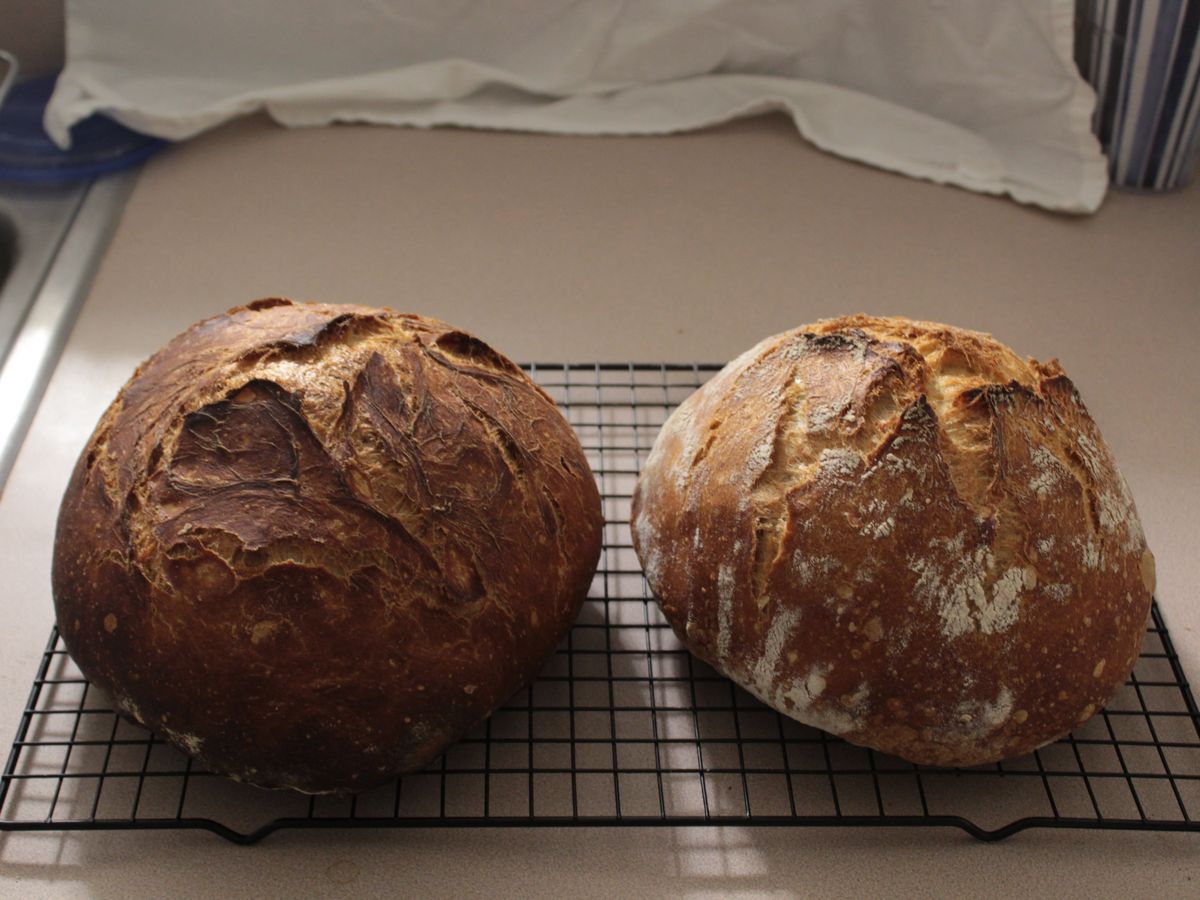
Tags: baking